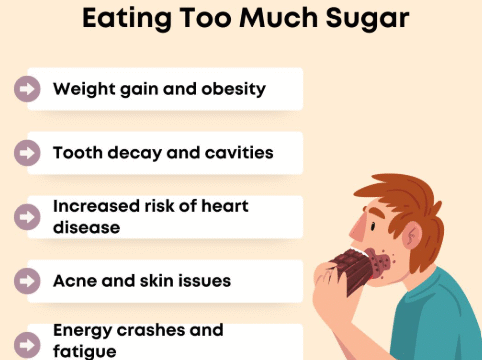Creating fitness goals should feel encouraging, not overwhelming. Many people start their fitness journey with big expectations, only to lose motivation when the results do not come as quickly as they hoped. The truth is, gentle fitness goals often lead to more lasting progress than aggressive ones. They make room for real-life balance, help reduce stress, and allow your body to grow stronger in a sustainable way. Setting goals that are kind to yourself is not about doing less; it is about building a healthy relationship with movement and self-improvement.
The first step in creating gentle fitness goals is to start from where you are. Instead of comparing your progress to others or to a version of yourself from years ago, look at your current habits, energy levels, and lifestyle. This helps you design goals that fit your reality, not an ideal. For example, if you have been inactive for a while, walking for ten minutes a day might be a great starting point. Once that feels comfortable, you can gradually increase your time or pace. Beginning with realistic goals allows your body to adapt without unnecessary strain, and it helps your mind associate exercise with positivity rather than pressure.
Gentle goals also focus on how you want to feel, not just on numbers. Many traditional fitness plans center around weight, time, or distance. While those can be useful, they sometimes create frustration if progress slows. A kinder approach is to ask yourself how you want your fitness journey to affect your mood, energy, or confidence. Maybe your goal is to feel more relaxed after long workdays or to have the stamina to play with your kids without getting tired. These emotional or functional goals are often more rewarding and motivating because they connect directly to your quality of life.
Another key part of creating gentle goals is understanding that progress does not need to be linear. There will be days when you feel strong and others when your energy is lower. Instead of judging yourself, recognize that consistency matters more than perfection. You can still move forward even if your pace varies. Adjusting your workouts to how you feel that day—whether it means a light stretch instead of a run—keeps your body safe and your mind positive. A flexible mindset helps prevent burnout and keeps fitness enjoyable rather than stressful.
It also helps to make your goals specific but kind. Instead of setting a vague goal like “get fit,” you can choose something more personal such as “move my body four times a week in ways that feel good.” This leaves room for variety while giving you a clear direction. You might walk one day, dance the next, or do yoga over the weekend. Gentle goals allow for creativity and change, so you never feel trapped in one routine. The more enjoyable your workouts are, the more likely you are to stay consistent over time.
Celebrating small wins along the way is another important part of a gentle goal-setting approach. Every time you complete a workout, drink more water, or notice improved energy, you are achieving progress. These small victories build momentum and help you stay motivated without needing extreme results. Recognizing even modest improvements reinforces the idea that your effort matters. This kind of self-acknowledgment turns fitness into something you look forward to, not something you feel pressured to complete.
When creating gentle fitness goals, it is also valuable to include rest and recovery in your plan. Many people overlook the importance of rest days, but they are essential for healing and strength. Giving your body time to recover helps prevent injuries and supports steady improvement. Gentle fitness recognizes that rest is part of the process, not a sign of failure. When you balance effort with relaxation, you create harmony between your physical and mental well-being.
Listening to your body is one of the most powerful skills in maintaining gentle goals. If an exercise feels painful or exhausting, it may be your body’s way of asking for adjustment. Modifying movements, reducing intensity, or trying different activities can make fitness feel safer and more sustainable. Over time, this awareness builds trust with your body, teaching you to respond to its needs rather than ignore them. This is especially important for long-term health because it encourages mindfulness and self-care.
Another element of gentle goal-setting is focusing on consistency rather than quick results. Many people start strong but stop when progress slows. Gentle goals remind you that progress comes from regular effort, even if it feels small. A short daily walk or a few minutes of stretching can be more beneficial than occasional intense workouts followed by long breaks. When you focus on showing up, your actions begin to add up naturally, and you build habits that last.
It can also be helpful to pair your fitness goals with positive emotions instead of self-criticism. For example, rather than saying “I need to lose weight,” try saying “I want to feel lighter and more energized.” This subtle change in wording creates a kinder, more encouraging tone that motivates you to move out of care for yourself rather than frustration. Language plays a big role in how you experience your goals. When your words are gentle, your mindset follows.
Social support can make gentle goals even more rewarding. Exercising with friends, joining a supportive online group, or simply sharing your progress with someone who encourages you can help you stay inspired. Support systems remind you that you are not alone and that everyone’s journey looks different. Positive reinforcement from others can also make it easier to stay consistent without pressure or comparison.
Over time, you will find that gentle goals help you create a balanced lifestyle that feels natural instead of forced. You begin to notice improvements not only in your body but also in your mood, sleep, and confidence. Your relationship with exercise becomes something peaceful and empowering rather than a source of stress. This is the beauty of gentle fitness: it invites growth through kindness, patience, and self-awareness.
As you continue your journey, remember that the goal of gentle fitness is not perfection—it is progress that feels sustainable. Every step, no matter how small, is a sign of care and commitment to yourself. By choosing to move with compassion and purpose, you are building a foundation for lifelong wellness. The more you celebrate balance and self-kindness, the more rewarding your fitness routine becomes.
In the end, creating gentle fitness goals allows you to enjoy the process as much as the outcome. It transforms your mindset from chasing results to nurturing consistency. You begin to value movement for how it makes you feel rather than what it changes on the outside. With this approach, your body grows stronger, your mind becomes calmer, and your overall well-being improves naturally. Fitness becomes less about pushing limits and more about supporting your best self—gently, patiently, and with kindness every step of the way.






